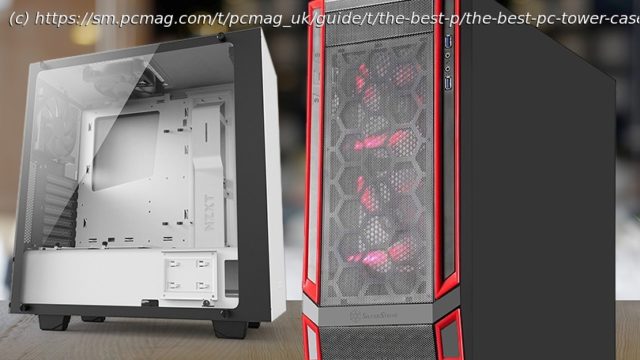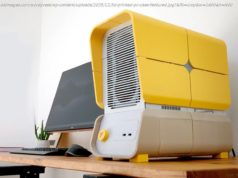RGB-packed bling box? Aquarium-style glassy chassis? The right PC case can make or break your custom computer build. Here’s what to look for when buying a new full-tower chassis, along with reviews of our highest-rated PC cases.
Your house, according to the legendary advice of George Carlin, is the place where you put your stuff while you go get more stuff. But a PC tower case is not just the box where you put your PC components while you earn money to buy better ones. (These days, given the cost and tight supply of many cutting-edge CPUs and graphics cards, that may not even be possible.) It matters much more than that. If you’ve built your own PC in the past, you know that having the right PC case can make or break the whole process. It’s not just a question of fitting the parts inside—it’s easy enough to match up the motherboard size, count the bays, and make sure the chassis has the front-panel ports you want. It’s the small stuff that separates a good PC case from one that makes your build easy—or even makes it sing. That can be intangibles like cable-routing features, or the position of the power supply or the drive bays relative to the other parts. It can be the look; the case defines the identity of your PC. Also, a PC case may be rated to accept a given motherboard—ATX, MicroATX, and so on—but that’s no indication that you’ll have enough room inside to build a system with ease. Clearances around the edges of the board may be tight, cable cutaways for routing wires behind the board may be scarce or ill-placed, and you may need to sacrifice drive bays to accommodate long video cards. Here’s what to know when assessing PC cases. The PC Chassis In 2021: Trends and Changes In our experience, tower cases tend to alleviate many of the space-related ails when building a PC, and it’s not rocket science why: They’re simply bigger. Most offer adequate room for cable routing and long video cards, and they should have room for enough drives, given today’s per-drive capacities, to satisfy most needs short of a server’s. If you have the room for one, a tower is an ideal platform for a new PC build or as a case upgrade for an existing system that’s running out of room inside for drives or card expansion. In the last few years, we’ve seen some clear trends among tower cases, too. Aggressive sci-fi and mecha themes were big for a while, but that has given way to subtler aesthetics: clean designs with neutral themes and an emphasis on the quality of external materials. (That said, you still can find those out-there PC-case designs in places, if you want them.) For a while, it looked like the DIY PC-case market was shifting over entirely to a blinged-up, geeky gamer aesthetic, but the design winds have shifted a bit. Over the last couple of years, we’ve also seen a major move to glass and acrylic side panels, as well as the integration of mood lighting, whether one-color or programmable RGB. What’s also shifted: the definition of a tower case. «True» towers—with huge banks of drive bays and bodies more than 20 inches tall—are still around, but the lines have blurred between these and larger mid-tower chassis, which tend to lie in the 18-to-20-inch height range. But even these are seeing their own splintering and hazy categorization: Just about all mainstream big cases, for example, have eliminated front-facing 5.25-inch drive bays altogether, assuming that buyers won’t be opting for internal optical drives anymore. These really minimal cases were a subclass of their own a few years ago but are now the norm, not the exception. As 5.25-inch bays have vanished, the really large towers have fallen out of favor with many buyers who aren’t doing elaborate modding or liquid cooling. Another reason why: limitations to video-card SLI that emerged in 2016 and keep accelerating. With its 10-series «Pascal» video cards, Nvidia put the official kibosh on multiple-video-card configurations of more than two cards. One of the traditional big reasons high-end PC builders would opt for a large PC case is to host multiple video cards in an Nvidia SLI or AMD CrossFireX array. With Nvidia’s «Turing» (20 Series) and «Ampere» (30 Series) RTX cards currently the toast of the video-card world (and the cards largely made of unobtanium), SLI has become even less likely an option for the bulk of users. With the 30 Series, only the ultra-expensive GeForce RTX 3090 can be paired up in SLI, and the cost for two of them nowadays could instead get you a modest used car. With today’s decided shift to using just one video card, more moderate-size towers are in the offing. Of course, you can still build out a PC with more than two older cards in an AMD CrossFireX arrangement (or using legacy Nvidia cards).






